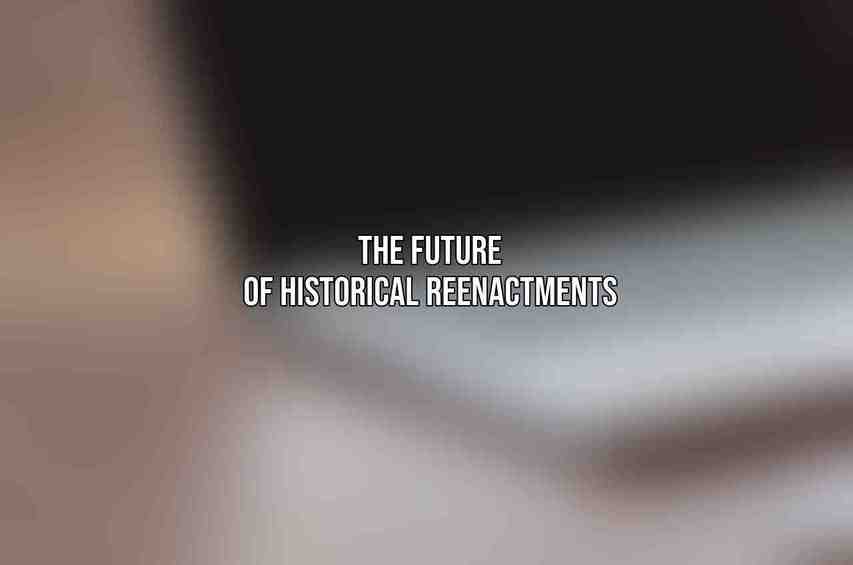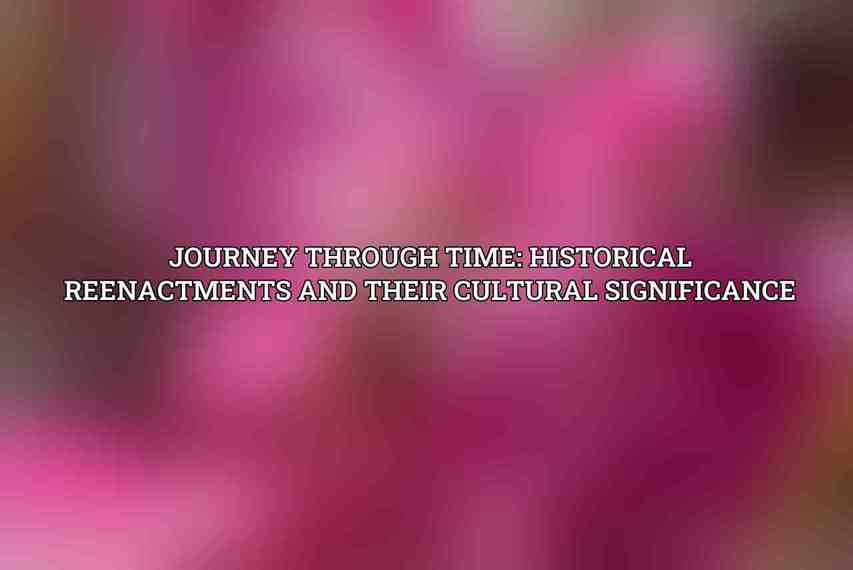Historical reenactments, a popular cultural phenomenon, involve recreating historical events or periods to provide a tangible link to the past. Participants meticulously dress in period attire and often use historical tools, weapons, and practices to immerse themselves in a bygone era. The main goal is to bring history to life and educate both participants and spectators about a specific time in history. These events can vary widely in scale, from small local gatherings to large international reenactment festivals.
Distinctive characteristics of historical reenactments include meticulous attention to detail in costume and equipment, adherence to historical accuracy in portraying events, and a passion for the historical period being reenacted. Participants often spend significant time researching their roles and preparing for these events to ensure an authentic portrayal of history.
Types of Reenactments
- Medieval battles and jousting events: Popular reenactments include medieval battles, where participants engage in staged combat using historically accurate weapons and armor. Jousting events, inspired by medieval tournaments, showcase equestrian skills and chivalry.
- Living history demonstrations and festivals: These reenactments focus on showcasing daily life, crafts, and customs of a particular historical period to provide a comprehensive understanding of the past to the audience.
- Traditional ceremonies and rituals: Reenactments of traditional ceremonies and rituals are significant in preserving cultural heritage and ensuring that historical practices are not forgotten.
The Role of Reenactments in Preserving History
Documenting the Past
Historical reenactments serve as a unique form of documentation, preserving not only historical events but also the knowledge and skills of the past. By recreating key events and periods, reenactors contribute to the collective memory of society, ensuring that important facets of history are not lost to time. Through hands-on participation, individuals can gain a deeper appreciation for the challenges and triumphs of the past.
Education and Interpretation
Immersive learning experiences provided by historical reenactments offer participants a chance to engage directly with history, moving beyond textbooks and lectures. These events promote historical literacy by making the past tangible and relevant to modern audiences. Public outreach efforts associated with reenactments further enhance educational opportunities, reaching a broad audience and sparking interest in history.
Reenactments as a Cultural Expression

Historical Authenticity and Accuracy
Maintaining historical authenticity and accuracy is paramount in historical reenactments to ensure that the events portrayed are as close to the historical record as possible. Reenactors often follow strict standards and meticulously research primary sources to recreate past events faithfully. From clothing to battle tactics, every detail is crucial in capturing the essence of a particular era.
Social and Community Engagement
Beyond historical accuracy, reenactments play a vital role in fostering a sense of community among participants and spectators. These events provide a platform for individuals with a shared interest in history to come together, exchange knowledge, and form lasting connections. By promoting cultural heritage and tradition, reenactments contribute to the preservation of collective identity and values.
The Challenges of Reenactment
Authenticity vs. Interpretation
One of the significant challenges in historical reenactments is striking a balance between historical accuracy and audience engagement. While authenticity is crucial in portraying the past, reenactors often face the dilemma of making historical events appealing and understandable to contemporary audiences. This challenge requires careful consideration of how to present historical facts without compromising accuracy or integrity.
Safety and Logistics
Ensuring the safety of participants and spectators is a top priority in historical reenactments, especially in events involving combat or large crowds. Proper planning, training, and adherence to safety protocols are essential to prevent accidents and injuries. Managing crowd control and event logistics, such as parking, amenities, and emergency services, is crucial for the smooth execution of reenactment events.
The Future of Historical Reenactments

Integrating Technology
As technology continues to advance, historical reenactments are likely to incorporate virtual and augmented reality enhancements to offer more immersive experiences. These technological tools can provide a new dimension to reenactments, allowing participants and audiences to interact with history in innovative ways. Furthermore, digital archives and educational applications can help bring history to a broader audience and ensure its preservation for future generations.
Adapting to Changing Societal Values
In an evolving society, historical reenactments must adapt to address issues of representation, diversity, and inclusivity. By reevaluating their portrayals and narratives, reenactors can create a more inclusive environment that resonates with diverse audiences. Engaging with younger generations through interactive and educational programming is crucial for ensuring the continued relevance and popularity of historical reenactments. Read more about this on Ultimate City Guides for Cultural Experiences: Powered by Sightseeing Pass
The Enduring Legacy of Reenactments
Historical reenactments hold significant cultural and educational value, offering a unique way to experience and understand history. By preserving the past, educating the public, and fostering community engagement, reenactments play a vital role in shaping our collective memory and appreciation of the past. As these events continue to evolve and adapt, their enduring legacy will continue to influence how we interpret and connect with history in the years to come.
Frequently Asked Questions
1. What are historical reenactments?
Historical reenactments are performances or events that recreate historical scenes or periods from the past with the aim of bringing history to life and educating audiences.
2. Why are historical reenactments culturally significant?
Historical reenactments are culturally significant as they help people connect with their past, preserve cultural heritage, and learn about historical events in a tangible and interactive way. Dive deeper into 2024’s Must-Visit Cultural Destinations with a Sightseeing Pass
3. How do historical reenactments contribute to education?
Historical reenactments provide a hands-on learning experience that engages participants and spectators, helping them gain a deeper understanding and appreciation for history. You can find more information on Ultimate Guide to Cultural Tours Using a Sightseeing Pass
4. What types of historical reenactments are commonly seen?
Common types of historical reenactments include battles, festivals, living history museums, theatrical performances, and demonstrations of historical skills and crafts. Read more on Maximizing Your Sightseeing Pass: Tips for Cultural Enthusiasts
5. How can individuals get involved in historical reenactments?
Individuals can get involved in historical reenactments by joining historical reenactment groups, attending reenactment events, volunteering at living history museums, or participating in workshops and training sessions. You can find more information on Top Benefits of Using a Sightseeing Pass for Cultural Experiences

